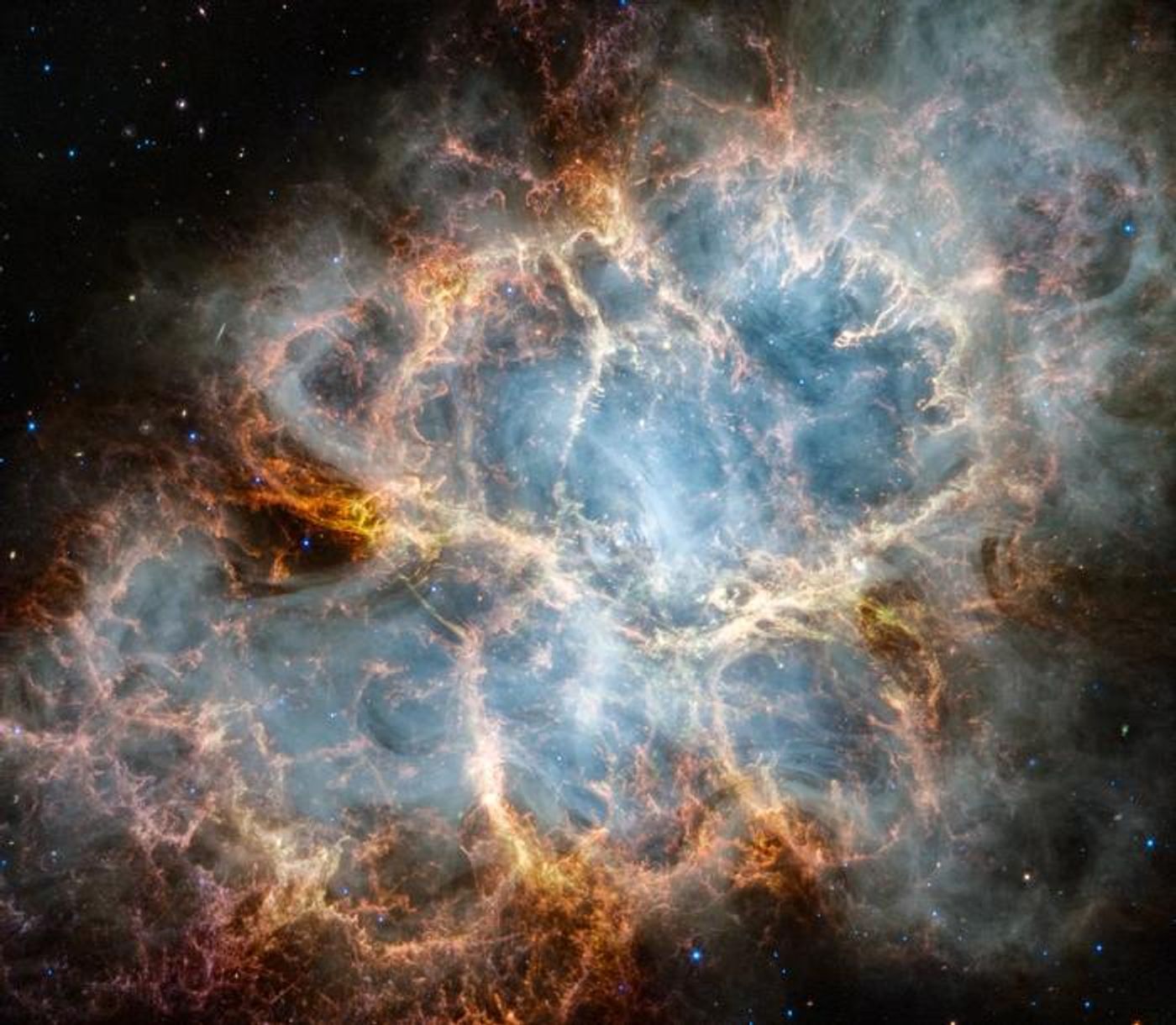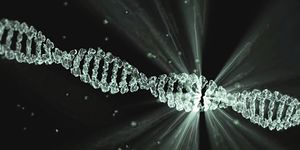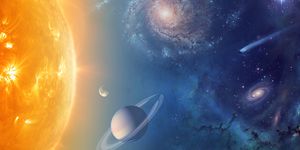Crab Nebula's Pulsar Heart Revealed with Webb's Detailed Infrared Imaging
The Crab Nebula, also known as Messier 1, is one of the most well-known celestial objects, as this breathtaking supernova remnant has been imaged hundreds of times by NASA and all the way down to amateur astronomers. Recently, NASA’s James Webb Space Telescope (JWST) used its powerful Near-Infrared Camera (NIRCam) and Mid-Infrared Instrument (MIRI) to pierce the heart of one of the most mysterious objects in the heavens in hopes of gaining new insights into its composition and potential origins.
A recent image of the Crab Nebula, aka Messier 1, was recently taken by NASA’s James Webb Space Telescope’s NIRCam (Near-Infrared Camera) and MIRI (Mid-Infrared Instrument), revealing new details of the supernova remnant in infrared light. (Credit: NASA, ESA, CSA, STScI, T. Temim (Princeton University))
“Webb’s sensitivity and spatial resolution allow us to accurately determine the composition of the ejected material, particularly the content of iron and nickel, which may reveal what type of explosion produced the Crab Nebula,” said Dr. Tea Temim, who is a research astronomer in the Department of Astrophysical Sciences at Princeton University and leader of the team responsible for these recent images.
These new infrared images reveal new aspects of the Crab Nebula that optical images from Hubble in 2005 couldn’t disclose, including dust grain emissions in the center portions of the nebula, gaseous filaments, charged particle emissions, and the pulsar heart at the center of the nebula. This pulsar, which is the white dot located at the center of the nebula, is a rapidly rotating neutron star leftover from the supernova explosion that produced the nebula, and whose winds continue to expand the nebula out in all directions, including its massive magnetic field, as the Crab Nebula is estimated to be approximately 11 light-years across.
Going forward, astronomers hope to continue to learn more about the Crab Nebula from a combination of images taken by other instruments and upcoming Hubble data, which will be the first time Hubble images the Crab Nebula in more than 20 years.
Located approximately 6,500 light-years from Earth, the Crab Nebula gained international attention in 1054 AD when its supernova explosion was observed and documented by medieval astronomers, later being given the designation SN 1054.
What new discoveries will astronomers make about the Crab Nebula in the coming years and decades? Only time will tell, and this is why we science!
As always, keep doing science & keep looking up!
Sources: NASA, EurekAlert!, NASA (1), NASA (2), Wayback Machine









